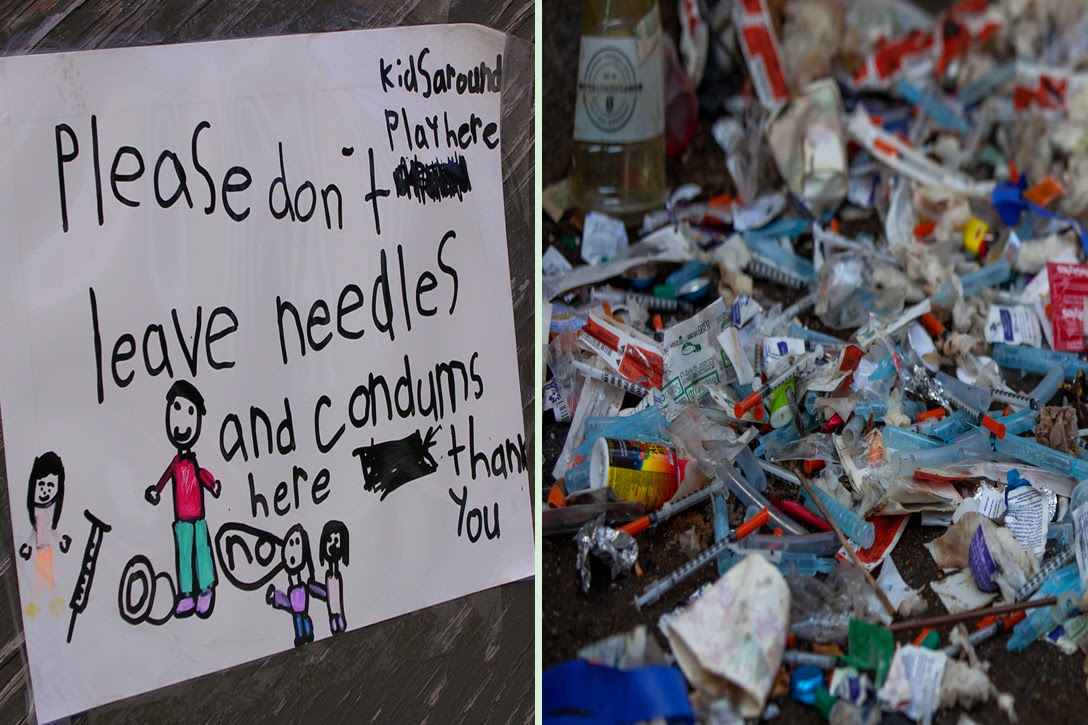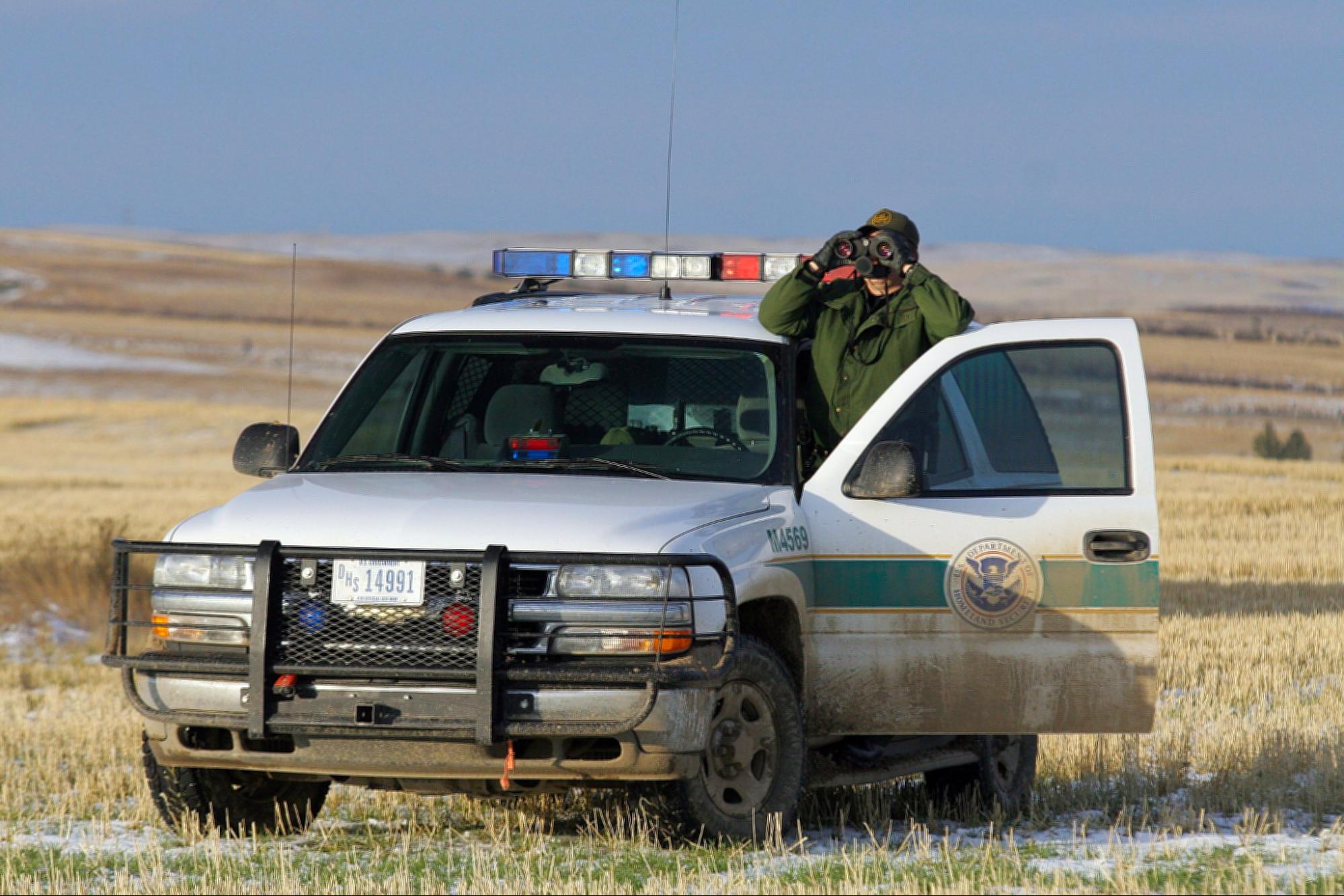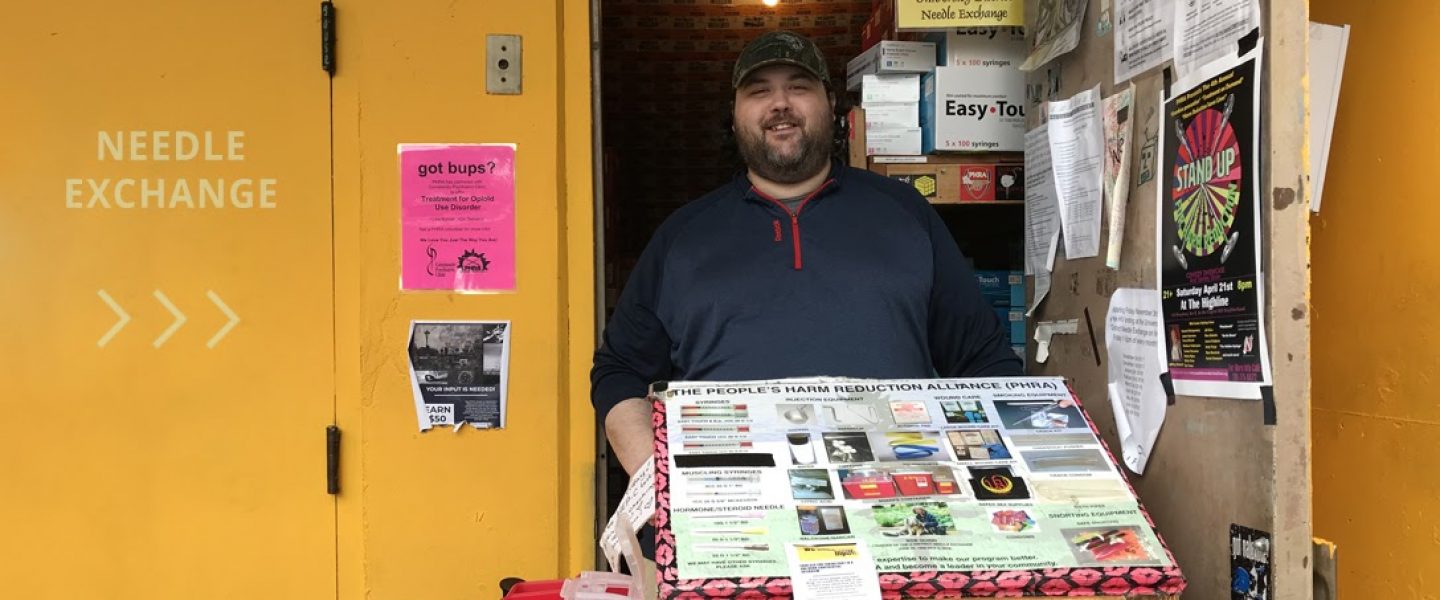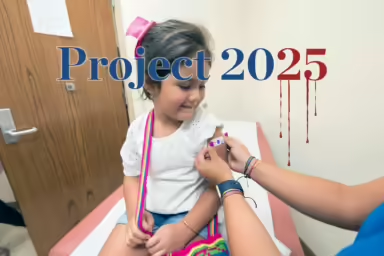In the name of harm reduction, official locations could soon supplement the underground network offering places to inject drugs.
|
Listen To This Story
|
There are dozens of them hidden across Seattle: So-called safe consumption sites where users take illegal drugs under the watchful eye of medically trained observers. They’ve been operating underground for years.
“It’s a lot like the speakeasies of old where you’ve got to know someone to be invited in,” said Shilo Jama, who runs a needle exchange program as part of the People’s Harm Reduction Alliance. “You need the password or some kind of information that you’re not, kind of, out to get them,” said Jama, whose organization takes no part in running the sites.
According to Jama, they take many forms, from single tents in homeless encampments to basements beneath storefronts, and in some cases apartments or entire houses. Inventories vary but often include clean needles and other sterile tools, oxygen tanks or naloxone to prevent overdoses, epinephrine against allergic reactions, and medical personnel — or at least someone who knows how to administer lifesaving medication in case of an overdose.
And while these spaces differ in the ways they operate, their central purpose is clear: to make drug use for those suffering from addiction safer. King County and Seattle have seen a dramatic rise in overdose deaths over the last decade, much like the country as a whole. In response, advocates for harm reduction, including current and former users, have taken matters into their own hands while waiting for official public health policy to catch up.
“Especially for the most marginalized, building trust and relationships over the long term is essential for durable engagement into drug reduction programs and to decrease harm.”
“They are citizens of Seattle who have created spaces so people who already were using in those areas had a place to go,” Jama explained. “These places are creating policy.”
And public policy may soon be catching up. The sites could be joined by much less secretive locations that are publicly funded and city-sanctioned, which would not only be a first for Seattle but also a first for the country.
A budget amendment sponsored in mid-November by City Councilmember Lisa Herbold allocated $1.12 million for health services for drug users to reduce overdoses. Public health facilities across the city that are already serving those in need could place their bids for grants to expand their services, including but not restricted to supervised drug use. The earmarked funds still have to be released to the county public health department before they can be bid on, which might happen as early as March next year.
Proposals to build stand-alone sites with trained medical professionals have been floated for the last three years, but were sidelined by legal questions. This latest version bypasses siting and financial obstacles by funding resources and training for staff at existing emergency shelters. “There is a new approach,” Herbold explained, one that “does not rely on establishing a specific new location — so it’s not a bricks-and-mortar proposal anymore — to provide supervised consumption services. Instead it focuses on providing services in locations that are already serving these folks.”
Discussed at length during a meeting of the Public Safety and Human Services Committee, the proposal emphasizes the role of compassion in treating people caught up in substance abuse.
“Especially for the most marginalized, building trust and relationships over the long term is essential for durable engagement into drug reduction programs and to decrease harm,” said Dr. Richard Waters, a health care provider from Neighborcare Health. The intention is to bring “existing drug use that is already happening in unsafe ad hoc drug consumption spaces to places that are safe, welcoming, non-stigmatizing.”

Two providers — the Hepatitis Education Project and the Aurora Commons — stepped forward at the committee meeting to emphatically endorse supervised consumption. Their locations provide many harm reduction services: naloxone to counter overdoses, meals for the hungry, testing and links to care for hepatitis C and HIV, as well as wound and foot care. Michael Ninburg, executive director of the Hepatitis Education Project, said “it’s not only about supervised consumption. It’s about getting people other services that they want or need.”
The budget action gives prospective applicants latitude to shape their bids to their own needs. “It could look like putting an intercom in a bathroom and creating a safer bathroom strategy, it could be increasing staffing, it could be having some kind of medical supervision of drug consumption. But, I’m eager for social service agencies and health care locations to be innovative and creative when they apply for funding,” said Jesse Rawlins, public policy manager at the Public Defender Association, which is part of the coalition behind the proposal.
Lawmakers first convened the Heroin and Prescription Opiate Addiction Task Force in 2016 to confront the region’s spike in overdose deaths. Their recommendations — including the creation of at least two stand-alone supervised consumption sites on a pilot program basis — were endorsed by the King County Board of Health, which in turn urged local and state officials to move forward with the proposals.
In making their recommendations, the task force drew on well-established evidence detailing the positive impact of supervised consumption sites in other countries. Over 100 sites are currently operating legally in Australia, Canada, and Europe. A comprehensive review by the European Monitoring Center for Drugs and Drug Addiction, published in 2010, revealed that no overdose-related deaths had occurred at supervised sites. That’s a perfect track record for nearly 30 years, and it validates the most immediate purpose of supervised locations: medical staff can step in and prevent overdoses from turning lethal.
Beyond the most immediate, other studies highlight a range of additional benefits to drug users, as well as to the larger community. Sites prompt users to reduce high-risk behavior, such as neglecting to clean injection wounds or sharing needles, thus slowing the spread of hepatitis C and HIV. Users are less likely to inject in public spaces or leave injection-related litter behind. And since supervised sites are typically integrated alongside a range of health services, clients are more likely to eventually opt for drug treatment.
“The big legal thing to keep in mind is that state and local laws don’t need to be in lockstep with federal drug laws, and there’s lots of examples where they’re not.”
The original proposal to build two stand-alone pilot facilities in Seattle received funding at the time, but that was as far as it went. Seattle Mayor Jenny Durkan voiced concerns that the earmarked funds were not enough to put entirely new facilities in place. “We kind of pushed back on the narrative that the funds were not enough for a stand-alone site,” said Rawlins. “We said: ‘Okay — if you’re gonna take that lane then we’ll meet you and say that we can just allocate the funding to safer consumption services at existing locations versus stand-alone sites, so that solves your budget constraint.’ It kind of calls her bluff, if you will.”
Durkan previously campaigned on her support for the sites. But although she clearly welcomed the task force’s recommendations, a statement issued by city of Seattle spokesperson Kamaria Hightower seems a tad noncommittal, saying that “supervised consumption services … could be a way to accomplish those recommendations.” Regardless, Rawlins remains optimistic. “She is a supporter. … It’s just gonna take a little bit more pushing to get her to sign off on the public health contract so we can get the dollars out the door.”
Political caution is understandable given how controversial safe consumption spaces have been. Seattle is the only city within King County that followed the task force’s call to create the sites, while some of its immediate neighbors banned them outright. Even within Seattle, Initiative 27 was launched to keep public funds out of reach of any site. Ruling that it was not up to residents to dictate how the King County Board of Health spends its money, the ballot initiative was struck down by the Washington Supreme Court.
But public opinion is shifting. A 2019 poll found that Seattle voters prefer harm reduction to traditional law enforcement by a wide margin. And three in five strongly or somewhat support supervised consumption sites.
“There is certainly a loud minority of folks who don’t want [them]. Their idea of addressing public safety would be arresting our way out of it,” commented Rawlins. “In the city council budget process this year, whenever [this] was discussed, there were maybe five people that testified against, and probably 30-40 people that testified for.”

US Attorney Brian Moran warned the Council of its potential criminal liability “when it comes to providing funding for supervised consumption of deadly and illegal narcotics.” He didn’t specify what charges might look like, but previously said that he would not allow sites to open. His stance is in line with that of President Trump’s Department of Justice, as Deputy US Attorney General Rod Rosenstein made clear last year.
Such federal threats are currently jeopardizing a similar plan in Philadelphia proposed by a nonprofit known as Safehouse. After the organization raised enough money to cover its first year of operation, US Attorney William McSwain filed a civil lawsuit to stop the project in its tracks, arguing it violates a provision of the Controlled Substances Act colloquially known as the “crack house statute.”
A federal judge eventually rejected the suit on the grounds that the group would not focus exclusively on supervised consumption but would offer a whole suite of harm reduction services.
“Allowance of some drug use as one component of an effort to combat drug use will not suffice to establish a violation of [the Controlled Substances Act]. The ultimate goal of [the] proposed operation is to reduce drug use, not facilitate it,” Judge Gerald McHugh ruled. But the US attorney has appealed the decision.
How a revamped Department of Justice under the Biden administration would respond is up for speculation. President-elect Joe Biden has yet to announce his pick for attorney general. If he follows through on his rhetoric addressing the opioid crisis, harm reduction measures stand to gain financial and executive support. Supervised consumption, however, is not mentioned explicitly. The transition team did not respond to a request for comment.
Biden himself has gone through somewhat of a transformation. He co-authored the 1986 Anti-Drug Abuse Act, the statute that is being weaponized in the Safehouse case. More notoriously, it also instated the sentencing disparities between crack and powder cocaine that so disproportionately bore down on Black communities. His policy efforts into the mid-90s reflected the bipartisan mainstream of the times, when being tough-on-crime was the battlecry commandeering drug policy. More recently, Biden himself admitted he “got some things wrong” about his criminal law approach.
“The big legal thing to keep in mind is that state and local laws don’t need to be in lockstep with federal drug laws, and there’s lots of examples where they’re not,” reminded Mark Cooke, attorney for the ACLU Washington. State marijuana laws contradicting federal prohibition are one such example. Another is needle exchanges that are banned from receiving federal funds to purchase syringes.
And then there is the Supreme Court’s landmark decision in Gonzalez v. Oregon, which ruled that the Controlled Substances Act can’t keep physicians from prescribing drugs in accordance with Oregon’s Death With Dignity Act. “The Supreme Court said very clearly that public health and safety are really state and local issues,” Cooke explained. “I think there is a good track record of states doing what they need to do to protect their own public health.”
As Seattle inches closer toward official supervised consumption services, several cities across the country, from San Francisco to New York City, are working on their own proposals. Whoever gets there first, the precedent could catalyze wider acceptance, much as what has happened with marijuana legalization.
“I do think it will have national implications. Once the first city does it, every city is going to do it,” said Rawlins. As to the front-runner, he also wagers a guess: “I do think it will be Seattle. Mayor Durkan calls herself the innovative mayor and Seattle’s vocal about being the innovative city. It’s like — alright, let’s be innovative, let’s do it.”
Related front page panorama photo credit: Adapted by WhoWhatWhy from GoToVan / Flickr (CC BY 2.0) and Tyler / Flickr (CC BY 2.0)




